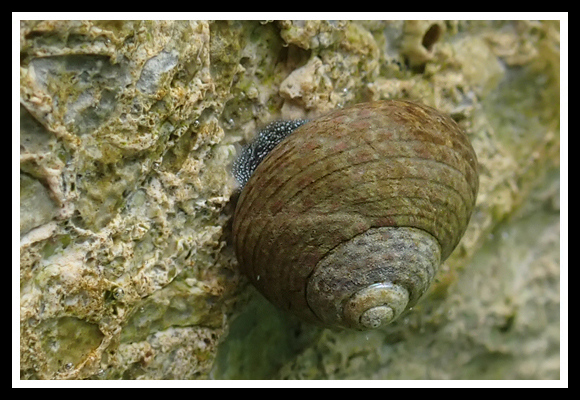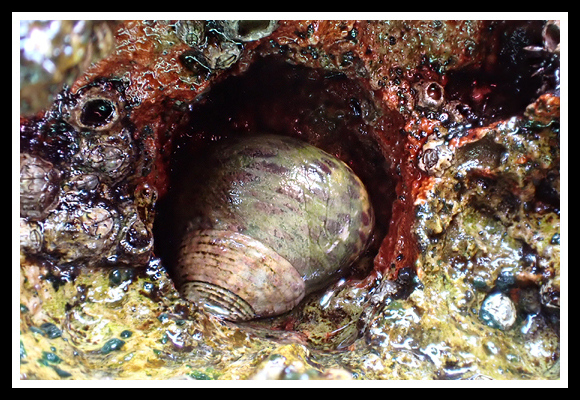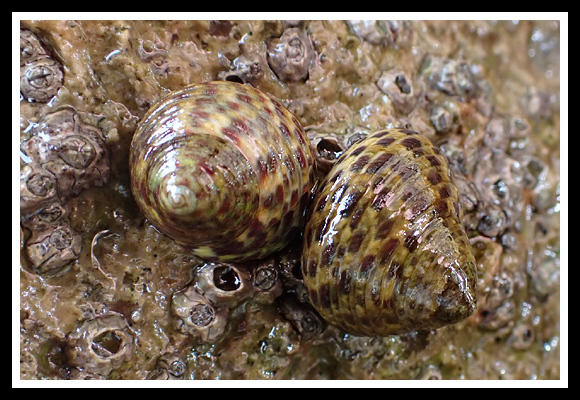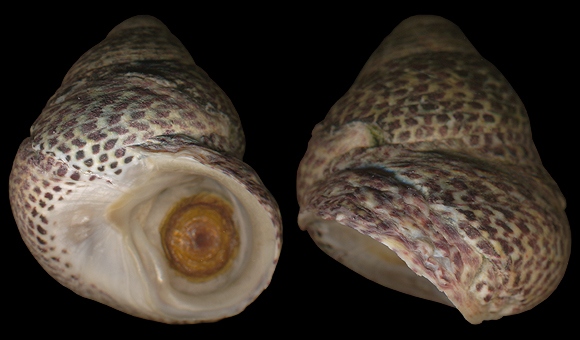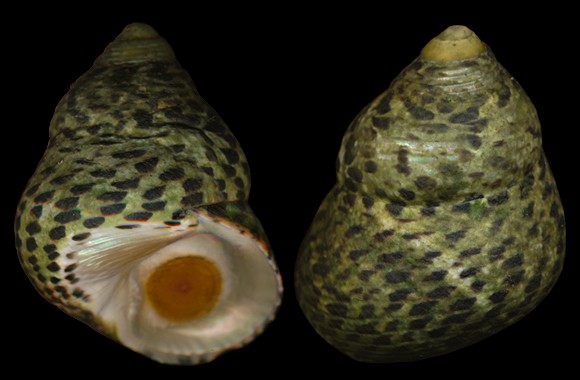
Original taxon: Trochus turbinatus.
Synonyms: fragaroides, tessulatus, zonatus…
On rocks in shallow water, east of the dam, Elounda lagoon, Lasithi, N. Crete. 33mm.
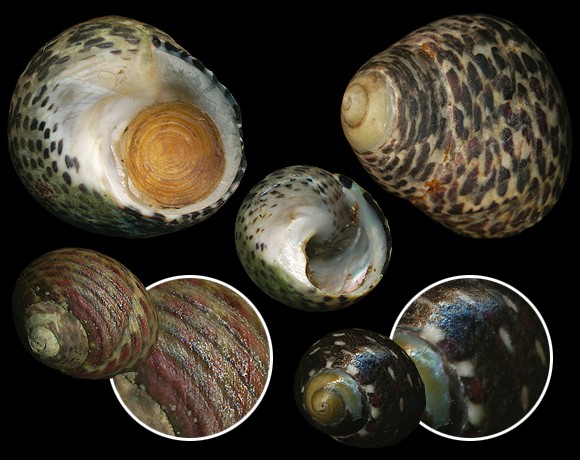
« Shell very strong and thick. Spire conoid, moderately high, composed of six convex whorls. First whorls eroded, the following provided with numerous furrows more or less deep, equidistant. Suture simple, not very apparent. Last whorl regularly convex; base imperforate, convex, usually worn around the umbilical region which is filled with a callous deposit. Aperture rounded. Columella slightly oblique, provided in its middle part with a protruding nodular outgrowth. Labrum rounded, thickened and smooth inside. » – Bucquoy, Dautzenberg & Dollfus: Les mollusques marins du Roussillon vol. I fasc. X, Paris 1885, p.403-404.
At foot of cliff, La Franqui, Leucate, Occitania, S. France. 10-23mm. Details: comparison between young turbinatus (left) and articulatus (right).
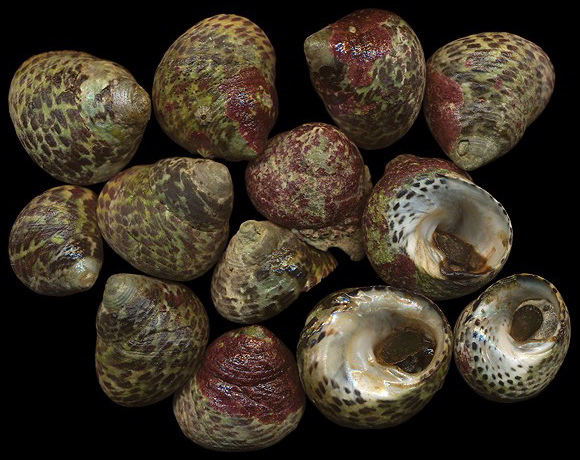
B. D. D.: « Colour of ash gray or yellowish, or greenish, tessellated with elongated or comma-shaped, reddish-brown or purplish subquadrangular spots. Umbilical deposit of an opaque white. Columella and inside of the aperture nacreous. The labrum presents on the inner side a margin articulated of gray and brown. » – Same spot. 17-22mm.
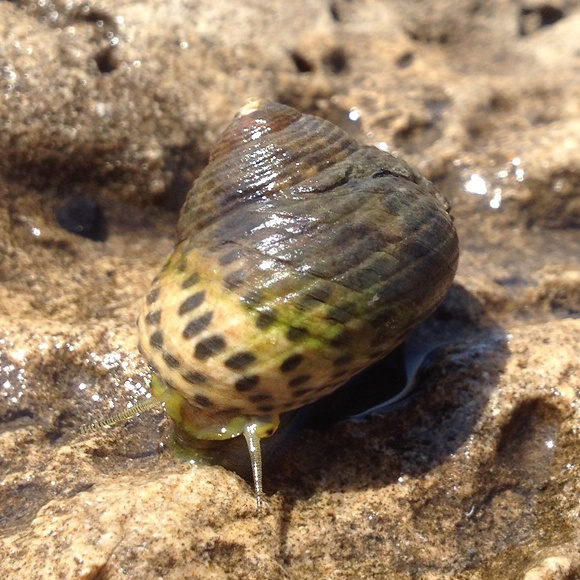
– (CC BY-NC) –
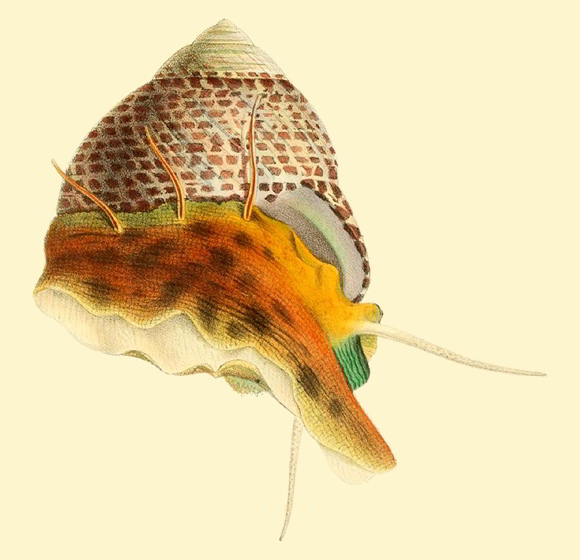
« The upper surface [of the foot] is rough, cut into small flattened subquadrangular tubercles by longitudinal grooves which often anastomose between them, and by transverse striations, much thinner and interrupted by the furrows […] This part of the surface of the body is tinged with a beautiful tawny colour, passing to the greyish towards the edges of the foot, on which spread broad irregular mottles, of a dark bistre brown. In this region of the animal, where the body joins the foot, rise, on each side, at equal distances, three slender tentacles, of which the anterior is the most elongated and the posterior the shortest. These organs are covered with very short hairs, lying on the surface; they must be examined with a fairly high magnification in order to perceive their very peculiar structure. » – Deshayes: op. cit. p.10-11.
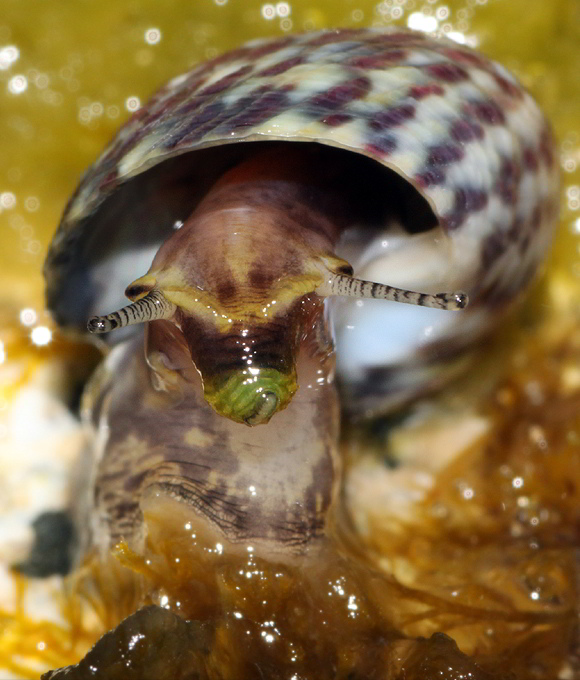
Deshayes: « The head is big and thick; it extends poorly forward in a broad muzzle, depressed from top to bottom, pierced in the center and a little below by the mouth. A little behind and on each side is a large conical tentacle, pointed at the top, laden with filaments all over the surface, which, alternately by brown and yellowish rings, give the tentacle the appearance of being articulated. On the outer side of the tentacle, at its base, is a short, cylindrical, obtuse tubercle, of a very bright orange-yellow, whose summit is occupied by the organ of sight. The anterior extremity of the head is adorned with lines of a very brilliant green; between the tentacles extends a sort of membranous veil, of a very dark brown, serrated on its free edge and whose serrations are of a beautiful green. »
Arbatax, Tortolì, Nuoro, E. Sardinia. Original picture provided by H. Krisp on Wikimedia Commons – (CC BY).
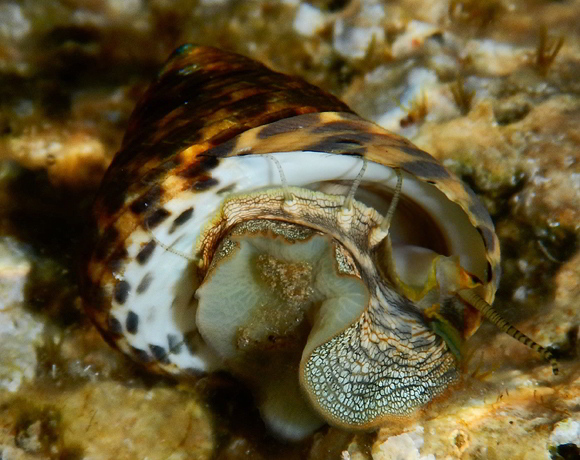
– (CC BY-NC-SA) –
